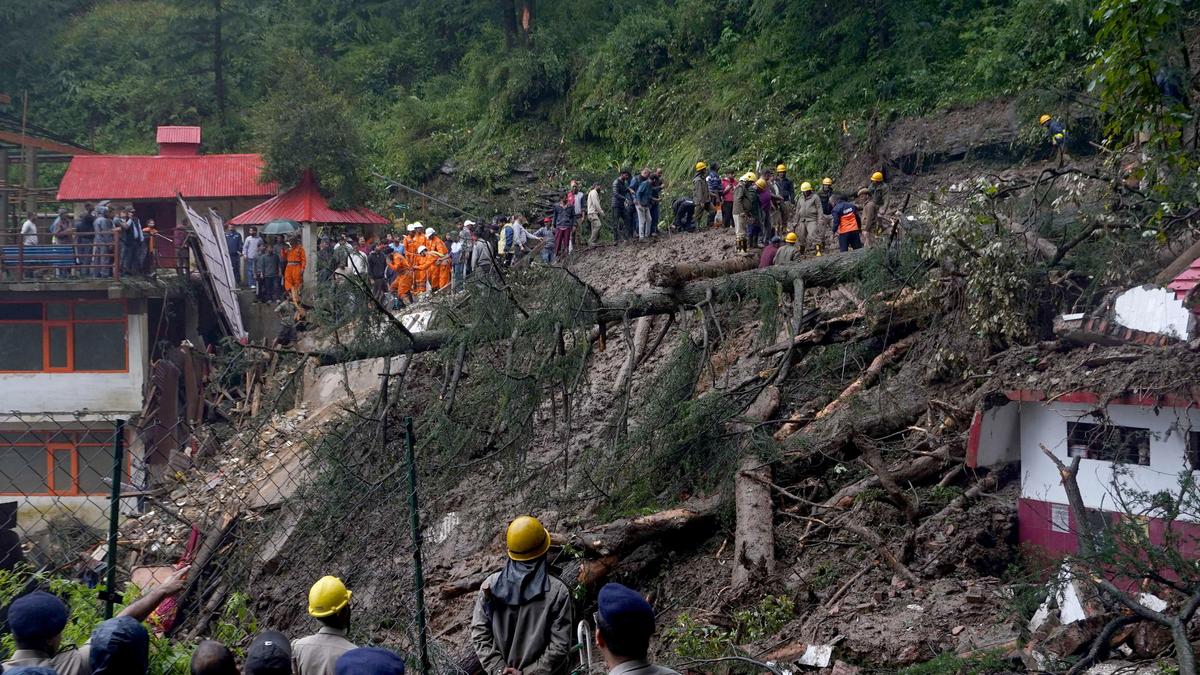Copyright thehindu

The Supreme Court of India’s observations, recently, on the state of affairs in Himachal Pradesh, and a writ petition thereafter, have resonated with environmentalists in the State. A notification about an addition of a green belt in the “Development Plan for Shimla Planning Area” was being contested in SLP(C) No.19426/2025 (M/s Pristine Hotels and Resorts Pvt. Ltd. vs State of Himachal Pradesh and Anr.) in the Court when Justices J.B. Pardiwala and R. Mahadevan voiced grave concern over the ecological disaster in the State. “We want to impress upon the State Government and Union of India respectively that earning revenue is not everything. Revenue cannot be earned at the cost of environment and ecology. If things proceeds, the way they are as on date, then the day is not far when the entire State of HP [Himachal Pradesh] may vanish in thin air from the map of the Country....” The judges directed the Court registry to register a writ petition in public interest vide order dated July 28, 2025. The Court said that it had felt compelled to make the observations in the larger interest of the State and its inhabitants regarding severe ecological imbalances and other environmental conditions that have led to natural calamities over a period of years. The Court went on to hold the people of the State also responsible for the disastrous state of affairs. This action by the Court fills us with hope as it is an intervention that could be the harbinger of a new era of development in the State. There is a need for course correction by both the State and its people. Policy, but only on paper It is ironic that there is a robust mandate in both the federal and State regulatory system for sustainable development; for development which is risk-informed, and risk averse. The problem is with the perfunctory, box-ticking manner in which these mandates are executed. The Court needs to ensure that the State implements the collective mandate for environmental governance in the State, spread across a plethora of eloquent laws, policies, rules, regulations, strategies and vision documents. Honest and sincere actions are needed on the ground. It would be appropriate if the Court gets in to, for example, the adequacy of the cumulative impact assessments of the basins as they need to be done in the right spirit so that hydropower development in a given basin can be regulated to minimise the overall impact of development on the ecosystems in the basin. For instance, ‘does river mean only its water’ is a question that needs serious consideration. Do run of the river hydropower projects also not fragment a river’s ecosystem? Do they not alter nutrient and sediment transportation and the composition of aquatic flora and fauna of the river? Do all of these not have an impact on the socio-economic life of people around the river? Projects of up to 2MW are permitted even in eco-sensitive zones. Do they have no impact? The building of highways Justice would be done if the Court fixes accountability in the fiasco related to the National Highway project (Bilaspur-Manali-Leh) for which the detailed project report was purportedly made sitting in a drawing room. Constructing roads in what are geologically fragile and seismically susceptible mountainous areas is tricky business. The Ministry of Road Transport and Highways knew about the dangers of laying mountain roads and had issued a circular on March 23, 2018, which had restricted the width of hill roads to 5.5 metres keeping in mind the ecological issues. Nothing seems to be done in a scientific manner on any National Highway being constructed in the State be it the alignment of highways, the cutting of the slopes, slope management, and debris deposit. The Environmental Impact Assessment has gaps as it is done in a ‘box-ticking approach’; mostly, projects are broken up into smaller parts to escape the EIA altogether. Roads that have strategic importance should come under more stringent standards to make them all-weather, resilient and dependable roads rather than laying them as superhighways which either sink or get washed away every monsoon season. Deforestation, excavation and tunnelling of the mountains using explosives and then dumping the waste into rivers are a sure recipe for disaster in these fragile mountain ecosystems. Did the National Highways Authority of India (NHAI) do anything to mitigate landslides as advised collectively by the Central Road Research Institute, the Geological Survey of India and the National Disaster Management Authority when constructing any national highway in the State? Only the NHAI can tell the public if it consulted the ‘Landslide Hazard, Vulnerability & Risk Atlas’ for the state of Himachal Pradesh’. It is important to establish that ‘Hazard, Vulnerabilities, Risk and Capabilities Assessment’ studies (HVRCA), climate vulnerabilities and other such studies in the State have been done with requisite scientific rigour on the basis of credible granular data, both historic and current, which could be of help for short-, medium- and long-term policy and governance actions. The world has seen tremendous loss of life and property in the State following natural disasters, especially in 2023 and in 2025. It would be interesting to know if the construction around rivers, streams and nullahs has been regulated in the State. Has the State carried out flood plain zoning of its river systems? Have policymakers forgotten that the State is home to five mighty river systems — the Beas, Ravi, Sutlej, Yamuna and Chenab (Chandra and Bhaga)? The State had relentless rainfall between August and September 2025, but can all these incidents be labelled as instances of cloud bursts especially when the India Meteorological Department has defined a cloud burst as an extreme weather event involving 100 mm (10 cm) or more of rainfall within one hour over an area of approximately 20 square kilometres to 30 sq. km? The end result is this Everything looks impressive when one looks at the interim report filed by the State. All the boxes have been ticked when it comes to formulating laws, policies, vision documents, plans and undertaking studies. The claim is that Himachal Pradesh was the first in the country to have banned the use of plastic, has a policy of buying back non-recyclable single-use plastic (SUP) waste, the first State to have environmental or e-flows in rivers, a hydro power policy, a payment for ecosystem services policy, a sustainable tourism development policy, an integrated master plan for sustainable tourism, and stringent building regulations. What purpose do all of these serve if the results are not visible on the ground? In 2011, the Aryabhatta Geo-Informatics & Space Application Centre (AGiSAC) was set up in the State as, among other things, as a repository for all data on the State’s environment, its natural and man-made resources, and data related to the impact of climate change to help government departments make evidence-based development decisions. Was this being followed? Catastrophes that were once considered to be ‘once-in-a-century events’ are now regular occurrences and exacerbated by a faulty developmental model. In meeting the developmental aspirations of Himachal Pradesh, the only way forward is to pursue development that takes into account the projected impact of climate change and integrates disaster risk reduction in the planning stage. The mandate of the law must be implemented in letter and spirit, with accountability in the system of governance. Archana Vaidya is a natural resource management and environment law consultant, and an advocate at the High Court of Himachal Pradesh



